(Sorry about a long break between Part 2 and 3, but we’ve been pretty busy!)
Year of the Dragon is coming to an end, and Phoenix is rising from the ashes to take its place. Phoenix will indeed be a great symbol for the upcoming Year given that we’ll be getting so-much-stuff during its course!
Whether the name is correct or not, a new Standard year also means a rotation. While it might not be the most impactful one in the history (especially since both Genn Greymane and Baku the Mooneater are already out), we’re definitely losing A LOT of interesting cards and synergies. All of the 2018 cards – from Witchwood, Boomsday Project and Rastakhan’s Rumble – will no longer be available in Standard with the launch of upcoming expansion.
In this article (or rather, series of articles), I will showcase some of the important cards that are rotating out. What qualifies as “important”, you might ask? Any card that has seen a decent amount of play in meta deck is there. I didn’t include cards that were mostly used in off-meta builds, haven’t seen any competitive play or were just straight up bad. Believe me when I say that I was on the edge about many of those cards, but in general decided to take the approach to include more than include less. So, let’s get down to business!
Also check out Part 1 – Neutral Cards!
Also check out Part 2 – Druid, Hunter, Mage and Paladin cards!
Priest
Priest is in an interesting spot not because of the Standard rotation itself, but because of Hall of Fame / class rework. On top of Year of the Raven, many cards will rotate out (such as Northshire Cleric, Divine Spirit or Prophet Velen). The class will get a bunch of new cards instead and a few of the old ones will get buffed. While I don’t cover those changes here, we need to keep them in mind. It’s really hard to say how the changes will work out. However, there’s still a bit to talk about when it comes to Year of the Raven cards.
Let’s start with one simple thing – Combo Priest as we know it is dead. The deck is losing the most obvious piece – Divine Spirit, but also cards like Topsy Turvy, Extra Arms or Bwonsamdi, the Dead (which would also be bad due to the lack of Northshire Cleric). However, I feel like they want Priest to stay away from combos in general. Rotating out Velen or Auchenai Soulpriest and the earlier Mind Blast, making Holy Smite deal 3 damage, but only target minions… Vivid Nightmare, which was used to clone Velen, supported those kinds of Priest combos, and it’s also gone. We will have to get used to playing Priest in completely different ways now. Yet another combo card – Test Subject – will also be gone. It was used in somewhat infamous APM Priest, but in general it was activator for some weird combos.
Miracle / Nomi Priest is another archetype that will have a hard time. While Chef Nomi is still there, Grave Horror will be out, and that’s a pretty big deal. On top of that, the deck loses cheap spells like Regenerate, Seance used to get extra copies of Horror/Nomi, and Cleric, which was a pretty key part of the deck.
Of course, Mass Hysteria might just be the biggest loss of them all. It was the most used Priest board clear for a while now, and while the class has got Breath of the Infinite recently, 2 AoE damage often just didn’t cut it. The problem with Priest class is that it always needed new AoEs to stay relevant (at least when we’re talking about slower builds). Usually we got at least one amazing AoE card per year, and Mass Hysteria was the one from Year of the Raven. Luckily, Priest now got a new Shadow Word: Ruin (4 mana, destroy all minions with 5+ Attack), although the class might still slightly struggle to destroy mid-sized boards like multiple 3/3’s or 4/4’s. But we’ll see.
Dead Ringer / Coffin Crasher were a part of a rather small Deathrattle package Priest got. I honestly thought that they would see more play and that Deathrattle synergies will be pushed more, but they weren’t. In the end, Dead Ringer was mostly used in decks that wanted to draw a specific Deathrattle minion or just as an extra Loot Hoarder in heavy-cycle decks, while Coffin Crasher was a part of Mecha'thun combo.
Nightscale Matriarch has seen some play in slower Priest builds, especially those with Dragon synergies. While Dragon Priest hasn’t seen play lately, the deck has got some tools in Descent of Dragons, so with 1 or 2 more synergies I would imagine that it might make a comeback. But this time without Matriarch.
And finally, Zerek's Cloning Gallery is a big hit to Resurrect Priest’s viability. Not only the deck often played cards with strong effects / Deathrattle / Reborn, so even their 1/1 copies held some value, but the key part was adding all of the big minions to the Resurrect pool so they can be revived through other means now. In the past, the card was also part of an OTK combo with Prophet Velen, Radiant Elemental etc.
All in all, Priest is losing nearly all of its combo capabilities, but instead the class gains better board control / minion-oriented tools. Will that shift work? We’ll see, but honestly I’m hopeful. It makes much more sense for Priest to have this kind of identity.
Rogue
I’m pretty scared about Rogue. Not because it might be too weak because it’s losing a lot – 0h no. Actually, it’s quite the opposite. The class is incredibly strong right now. Galakrond Rogue is incredibly strong and it loses almost no cards (SN1P-SN4P and Zilliax are just about the only ones, but Zilliax is played in over half of the decks and SN1P-SN4P is not key). Highlander Rogue is also solid and it loses a few cards, but not nearly enough to be affected. But let’s look at the specific cards.
First of all, a big part of “Burgle” package is gone. To be honest, Burgle/Thief Rogue was never really competitively viable, but it doesn’t mean that players haven’t attempted that. We had multiple Spectral Cutlass decks (which played weapon buffs + Academic Espionage to not run out of durability) and of course some builds that tried to run Tess Greymane successfully. Neither of those really worked, but hey. More recently, Bazaar Burglary lead to some more Thief Rogue decks, but they disappeared rather quickly. And of course, there’s also Blink Fox (which is one of my favorite card artworks), but it has seen a lot of play outside of those decks. It was simply a bigger version of Swashburglar – 3 mana 3/3 that gave you a random card wasn’t half-bad.
Then again, the “Deathrattle package” is gone. It wasn’t big, but we had two cards that let Rogue trigger Deathrattles – Necrium Blade and Necrium Vial. Both of them were pretty relevant, because most of the time you can’t trigger Deathrattles form hand, making them much slower and giving your opponent some time to react. While not a Rogue card, rotation of Mechanical Whelp is pretty relevant too, since it was one of the more common cards played in Deathrattle Rogue decks (because who wouldn’t want a free 7/7). Those two have gained back a lot of popularity early in Descent of Dragons thanks to Necrium Apothecary (then at 4 mana), but lost it again after it was nerfed. Still, Deathrattle is kind of a secondary synergy in the class, so it’s not the end of the world.
Pogo-Hopper and Lab Recruiter will be both gone. Ever since the card was released, people have tried to make Pogo builds. Every time a new synergy was released, people have again attempted that. But in the end, the deck was never viable – even after Pogo was finally buffed from 2 to 1 mana, it has briefly gained popularity, but its win rate was still garbage. I’ve decided to put it on the list because it’s a pretty iconic card at this point, and while I hoped that it will never become truly viable (because such a deck would be degenerate), I’m a little bit sad that it didn’t become a Tier 3 or so deck at one point. Lab Recruiter was mostly used in Pogo decks, but it was also briefly used in different builds, such as Quest Rogue (before it was nerfed 2nd time).
Captain Hooktusk was kind of similar to Pogo, in a way that players have attempted to make it work many times and well, most of the time it didn’t. Unlike Pogo, however, it has seen play in some viable builds. In the end, players have realized that building a whole deck around her might not be the best idea, so they added a small Pirate package to the already existing Tempo Rogue builds. At times Hooktusk builds were pretty popular, but pro players always had mixed feelings about her. Still, if Rogue ever wanted to build a full Pirate deck, Hooktusk will be missed.
While some players have never liked Spirit of the Shark (hi J_Alexander), it’s pretty clear that it was one of the more popular Rogue cards from Year of the Raven. Doubling Battlecries AND Combos is a powerful effect – for example, you could generate more Lackeys with EVIL Miscreant and then all of those Lackeys would have doubled effects (e.g. 4 damage, +4 Health and Taunt, Discover 2 cards). And of course, one of the best ways to use it was doubling Edwin VanCleef‘s Combo effect – you could easily build 20/20+ Edwins. The card was always controversial, though, because you usually had to spend 4 mana doing nothing first, and that’s never something you want to do in Rogue.
And last, but not least – Myra's Unstable Element. I remember card reviews and discussion about this card before it was released – the opinions were so different. You had many players calling it the most broken thing ever and many players calling it a suicide. And it turned out that the first group was more correct. Since it was mostly played in faster builds, most of the time it drew a full or nearly full hand. Yes – Rogue player also landed in fatigue, but that usually took a few more turns to kill him. And it is better to be in fatigue with a full hand than with 15 cards left in the deck but nothing to do. I lost many games against Rogue, who drew 7+ cards with Myra’s after I already ran him out of cards. While it has seen less play lately, mostly because Galakrond Rogue has enough card draw / generation and sometimes even struggles with too many cards (not the other way around), it was definitely a notable card at the time.
Shaman
I’m a little worried about Shaman. Okay, it’s true that the class had its 5 minutes not that long time ago (first the Quest Shaman early in Saviors of Uldum, then Evolve Shaman during Doom in the Tomb event and then Galakrond Shaman early in Descent of Dragons), but let’s be honest – after the recent wave of nerfs, it’s been in the dumpster. Sludge Slurper got its nerf reverted, but it’s definitely not enough. And now Shaman is losing so many significant cards. We’ll see how things work out in the end, and for now let’s look at the most important cards rotating out.
Nearly every Shaman archetype is getting hit, but we’ll start with perhaps the most important package – Overload. Ever since Thunderhead got buffed in Rise of Shadows, it’s been a Shaman staple. 4 mana 3/6 is a great stat-line, and the effect was just amazing. Summoning 2x 1/1 is great already, but they also had Rush, which means that you could remove some stuff immediately and cycle through multiple Overload spells without running into an issue with full board. On top of Thunderhead, Shaman also loses two cheap Overload cards that were used to activate it – Zap! and Voltaic Burst. Of course, they wouldn’t be nearly as strong by themselves, but they were also staple in Thunderhead builds. Lastly, Likkim, and Overload synergy card is gone. In the right build, the card was often a 3/3 weapon for 2 mana – great both as a board control tool and as a face puncher.
Shaman is also losing a “spell” package. While more loose and didn’t synergize with each other that much, Shaman had multiple cards that either gave you spells or synergized with them. Electra Stormsurge, Haunting Visions, Spirit of the Frog, Zentimo and Rain of Toads. Seeing play in various builds – some more meta, some more off-meta, Shaman will definitely feel that loss. Losing Electra Stormsurge and Spirit of the Frog will hurt most. Electra was a great card in Galakrond Shaman (doubling Dragon's Pack often won the game on the spot), while Frog was commonly seen in spell-heavy, aggressive builds, which used it to cycle through the deck very easily, often burning the opponent down in process. And finally, there’s Hagatha the Witch. The card hasn’t seen much play in a while, but it used to be a Shaman staple. Between immediate AoE clear and generating tons of extra spells, the card was amazing in Midrange/Control matchups, especially when the meta was a bit slower (and the extra value came in handy).
Then, there’s a sort of an Elemental package. While full Elemental Shaman builds weren’t really amazing, Shamans have often played Earthen Might + Menacing Nimbus combo. Both were solid individually, but if you managed to play them both together, they became even better. There’s also Bog Slosher, which is indeed an Elemental, but mostly used in Quest Shaman builds. It’s a Battlecry minion, which both progressed Quest and synergized with the reward (you could bounce something and give it +4/+4, not to mention that bouncing a Battlecry minion meant that you could double its Battlecry once again).
Ghost Light Angler might not be a huge loss, but it was pretty common in Murloc Shaman, which used to be a really competitive deck a while back. It’s still not terrible, but it’s been off-meta for the last expansions or so. Shaman is one of the Murloc classes, so I would be surprised if it didn’t get some more synergies in the Year of the Phoenix, though.
Eureka! is an interesting case, because it almost single-handedly made Big Shaman a decent deck at one point. It was never a popular meta build, but it was honestly pretty solid. Using Eureka to cheat out 8-10 mana minions (including Walking Fountain, Big Bad Archmage or Colossus of the Moon) was pretty solid value, especially since the minion itself was still in your hand (so you could play your key minions twice, or even thrice). I know that lots of players don’t like the idea behind “Big” decks, but Shaman was one of the most fair ones.
The Storm Bringer didn’t really see any play at 7 mana, then it got buffed to 6 and became an actually solid option for Token-heavy or Evolve-focused decks. The idea was that if you can easily flood the board, it became an amazing finisher. Even if you didn’t particularly high roll, you have still created a big board. If your opponent didn’t have a big AoE removal, you could usually close out the game (especially if you followed it up with Bloodlust. Not a card that Shaman will horribly miss, but Token decks would definitely want to run it next year too.
And finally, Shudderwock. It’s definitely the most important Shaman card rotating out. It’s been a staple for 2 whole years. In the end, it was played in nearly every Midrange and slower Shaman build. For the longest time, it had an entire Combo deck built around it, with some players loving it and others hating its guts. Then it was played in lots of Midrange decks, most notably in Quest Shaman built around Battlecries. More recently, it was also a Galakrond Shaman staple – replaying Galakrond’s Battlecry and summoning two more 8/8’s with Rush (as well as a bunch of 2/1’s with Rush), it was one of the most powerful cards in the deck. To be honest, I could talk about Shudderwock for hours, but everyone who played Hearthstone over the last 2 years have experienced the card at one point, so I won’t waste everyone’s time. One thing is sure – Shaman class will take a big hit because Shudderwock is rotating out.
Warlock
Warlock… The class is in a pretty rough spot. Zoo Warlock and Galakrond Warlock are okay-ish, but roughly Tier 3 okay-ish, so playable, but not powerful. Mountain Giant is rotating out to Hall of Fame, and while it’s not a class card, Warlock will clearly miss it most. Any Handlock-like build will be very difficult to play without it. And frankly, I’m not convinced that the new cards will change much. The class has got some okay cards, but they’re – once again – all over the place. Some big hand synergies, some Discard synergies (powerful, yes, but most of Discard synergies are rotating out of Standard), some Demon synergies, some handbuffs… It feels like they don’t have a very consistent plan for the Warlock class. Of course, we’ll see how it works in practice pretty soon, but let’s first take a look at the most important cards that are rotating out (it won’t really take long).
Let’s start with the Discard package. The Soularium, while a solid “Discard” tool, was mostly used in regular Zoo build. Drawing 3 cards for 1 mana is amazing, and if you play a low curve deck, then the chances are that you will be able to play all of them on the same turn and nothing gets Discarded. While it was never a key card, it worked like a charm in many builds. High Priestess Jeklik was the only “true” Discard card on this list, and she has seen some play. In fact, every time players were trying to build a deck around Discard synergies, she was present. Of course, those decks were never that successful, but that’s another story. And finally – Soulwarden, probably the most interesting one. 6 mana 6/6 card that gave you 3 extra cards… would be nuts under normal circumstances, but the fact that you had to run Discard cards to make it work meant that it has never shown its true potential. That said, there were some interesting combo decks built around it. For example, discarding one Soulwarden and then playing the second one meant that you had an infinite supply of 6 mana 6/6’s, something that was very powerful in certain matchups. We had some interesting decks built around it, but they were mostly off-meta.
Then, we’ve got it… let’s call it “Zoo package”. Grim Rally is one of the cards Warlock is going to miss most. It’s been a Zoo staple, especially since the deck has became more Token-focused. The deck flooded the board and it had a lot of “fodder” it could sacrifice (sometimes even for a positive effect – like in case of Scarab Egg). Then, AoE buffing the entire board is a pretty powerful effect in the board-oriented, token-heavy build. Then, we’ve got Soul Infusion. The card has seen quite a lot of play in Zoo, but mostly back in 2018. +2/+2 buff was already decent, but the main goal was to land it on a minion that will benefit from it even more. The best one was definitely Doubling Imp or Saronite Chain Gang. In case of those, it was +4/+4 in total, spread between two bodies. Summoning 2x 4/4 on Turn 3 or 2x 4/5 with Taunt on Turn 4 was a very powerful play. And talking about minions duplicating themsleves… Doubling Imp was also a Zoo staple back then, but mostly because it synergized with both Soul Infusion and the Zoo staple – Prince Keleseth. After Keleseth was gone and Zoo switched the gameplay somewhat, Doubling Imp was cut from most of the builds.
Then, we’ve got Demonic Project. It was actually pretty common in slow Warlock builds (Control, Cube) back when Shudderwock Shaman (Combo version) was all over the ladder. Hitting either Shudderwock or Grumble, Worldshaker disrupted the combo and made the matchup so much easier for Warlock. It was also used to get rid of some other key cards. However, with time combo decks became less and less relevant, not to mention that slow Warlock builds have fallen out of favor too. It was an interesting piece of tech, and something that Warlock would always like to have access to in case Combo decks run rampant on the ladder.
Omega Agent is an interesting card. On the one hand, it’s very weak on the curve. Some other Omega cards could at least be played for the vanilla stats, but this one was just bad – 5 mana 4/5 is basically unplayable. However, a dead card in hand didn’t matter THAT much in Warlock, since the class could cycle easily with Hero Power anyway. Then, on turn 10, it became very powerful. 3x 4/5, so a solid board flood, was great for only 5 mana. Especially if you also played Barista Lynchen to get three more copies… It was a serious finisher in a sort of Midrange Warlock. It never took off that hard, but I’ve played it and it honestly was stronger than its popularity (or lack of thereof) might have suggested.
And finally, the other most important Warlock card alongside Grim Rally – Lord Godfrey. A bigger version of Defile and a staple Warlock removal in any slower build. Since it was relatively easy to set up the board in a way that Godfrey would answer, lots of the time it was a 7 mana 4/4 + full board clear. Its only disadvantage were decks that played a bunch of big minions – while it was still pretty easy to start a chain with a smaller minion, if everything your opponent had was at 5+ Health, Godfrey was a bit pointless. Still, slower Warlock decks will miss it A LOT. It was a very powerful tool, and now they will have to rely on Twisting Nether as their only big AoE removal (and don’t get me wrong, it’s not bad, but it’s a much lower tempo and doesn’t deal with some pesky Deathrattles in the way Godfrey did).
Warrior
And the last class would be Warrior – a class that is losing A LOT. Control Warrior in some form – Taunt Warrior, Odd Warrior, Bomb Warrior or even just the old, regular Control build – was one of the most important decks over the last two years. It was viable on multiple occasions and had a very powerful toolset to take advantage of. Sadly – or luckily if you hated to face them – most of those cards are rotating out. Control Warrior as we know it will no longer be playable after rotation. Other than Control tools (which are very Mech-heavy), Warrior is losing some Dragon synergies and its Rush package.
So maybe let’s start with Mechs and Mech synergies. Eternium Rover was one of the strongest 1-drops in the game for a very long time – 1/3 are premium stats, Mech tag is great addition for the sake of Magnetize synergies, and it usually gave Warrior at least 2 Armor (and often more). Omega Assembly was an amazing value tool – you could play it before Turn 10 if you really needed to look for a specific Mech (such as Taunt vs Aggro), but most of the time you kept it until 10 mana. In that case, getting 3 cards for 1 mana was an amazing deal – even better was the fact that lots of those cards synergizes with your deck (and often had Rush too). Then, Dyn-o-matic, one of the strongest Mechs Warrior had access to. Doesn’t seem incredibly powerful – weak stats for the cost, pretty random effect… but given that you usually dropped him when you had nothing on the board, and that it can’t hit Heroes, it was an excellent removal. It could get rid of one mid-sized minion or a bunch of small tokens. And finally, Dr. Boom, Mad Genius. While not a Mech itself, it had amazing synergy with Mechs. Giving all of them Rush was a huge boost that many players have overlooked when first rating the card. It meant that every Mech in your hand could serve as a removal, and it was actually very hard for any deck to win the tempo game vs Warrior. Not to mention all of the value generation… Discovering more Mechs, summoning 1/1’s with Rush, dealing 3 damage, gaining 7 Armor… Even the 1 AoE damage came handy sometimes. The Hero Power had way more value than your regular one, so if you pressed in every turn, your opponents couldn’t outvalue you. Yep, that’s what made Boom so strong – after Warrior has played it, it was pretty difficult to win no matter what kind of deck you were playing. The card has been unnerfed recently (because it’s not really problematic in Wild), and in the short period of time it’s back to 7 mana in Standard, it’s already seeing quite a lot of play.
Then we’ve got the entire Rush package. Town Crier was, by far, the most important card from that package. Because come on – as long as you played Rush minions (and you did, because Warrior had access to some pretty good ones, not to mention Zilliax), it was a 1 mana 1/2 that draws a card. Basically every single deck in the game would play a card like that, because why not? Cycling through the deck means finding your important cards faster, and you put some board presence that didn’t cost you a card. And it’s going to hurt faster decks (such as Galakrond Warrior) even more than Control builds, since they care even more about the early board presence. Then we’ve got Redband Wasp, Woodcutter's Axe and Rabid Worgen, which have all seen occasional play. They were always more of a filler cards, as they were the weakest part of the Rush package, but Warriors had to play them at times. However, Militia Commander and Darius Crowley were both more important – especially the former. Before Restless Mummy got released in Saviors of Uldum, Militia Commander took its place in most of the builds. 4 mana 5/5 with Rush was very strong (especially if you could draw it with Town Crier), and while it losing attack hurt a bit, having a 5 damage removal and usually a small body left behind was not a bad thing at all. Darius Crowley had some snowball potential, but the problem is that it in many matchups it was hard to trigger its effect even on curve (since they didn’t drop any small minions). However, if it managed to grow for 2-3 turns, it could either be used as an “undying” removal or a big threat.
There’s also the rest of “Control” package. Starting with Warpath, one of the more powerful removals in Warrior’s arsenal. The best thing about it was obviously flexibility. While at no point it was a good card (1 AoE damage for 2 mana, 2 AoE damage for 4, 3 for 6 etc.), the fact that you could use it as any of those made it good. Sometimes you played it on Turn 2 when your opponent played a few 1 Health minions, sometimes you needed it to clear Token deck’s board on T4, and often times you played it five times for 5 AoE damage later in the game. Second card from Control package is Weapons Project. Since it’s a mirrored effect, it might not seem too strong, but it was a pretty solid card. You didn’t really care about your opponent gaining Armor most of the time, but you wanted to have as much Armor as you can. Even if it was trimmed down by the weapon, it took three turns. But more importantly, it could also be used as a weapon removal. Replacing your opponent’s current weapon with a new one destroys the old one, so it was very useful in any weapon-heavy meta (like against Rogues running 2x Waggle Pick or 2x Hooked Scimitar). And then, we’ve got Supercollider – another pretty underrated card. It made playing two similarly-sized minions against Warrior (with nothing in between them) really scary. Oh, you’ve got two 8/8’s? How about I clear them both for 5 mana and still have two more hits… Of course, punching big minions always hurts, but Warrior was THE class that could pull it off. Just to show how good it was – Warrior got a new spell lately (Ramming Speed), a 3 mana for one hit… compared to 5 mana for 3 hits in case of Collider (even if with some downsides).
Warrior has also got some Dragon synergies during Year of the Raven. Dragon Roar was a simple value tool – 2 cards for 2 mana. They were specific cards (Dragons, which most of the time were big minions), and were generated, so it’s sometimes an advantage in slow matchups (and at the same time, a disadvantage in faster ones). It has seen some play as a value tool. Then, Smolderthorn Lancer used to be a solid “removal on a stick”. It had Execute‘s effect with a 3/2 body for 3 mana – while a 3/2 might not seem big, it’s always some nice tempo, so it was better than running Execute itself. And lastly, Emberscale Drake – simply a solid, midrange Dragon – 5 mana 5/5 are solid stats, Dragon tag helped with activating other synergies, and gaining 5 Armor is never a bad effect. It’s not the most powerful Dragon ever (especially when comparing to some Dragons we’ve got in the last set of 2019), but it was solid.
A card that doesn’t really fit into any other “package” was The Boomship. While yes, it gave your minions Rush, the card was mostly used for the “summon” part. And not just any summon – if you summoned Mecha'thun and Malygos in particular, you could play a combination of Inner Rage and Whirlwind to clear everything and win the game with Mecha’thun if you had no other cards in your hand or deck. While it was never a mainstream strategy, it has seen quite a lot of play during its time in Standard (more than I would ever expect).


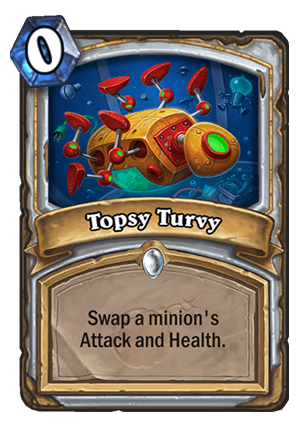

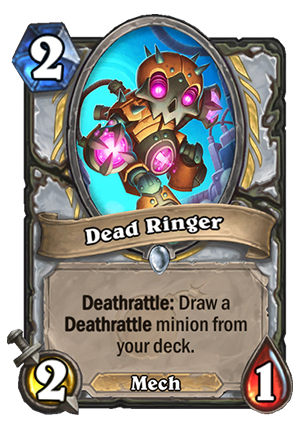
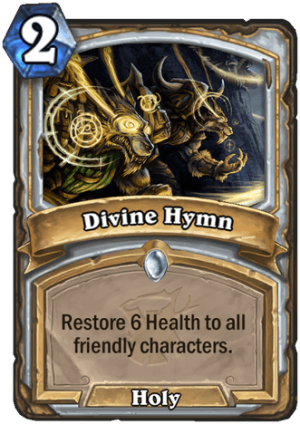
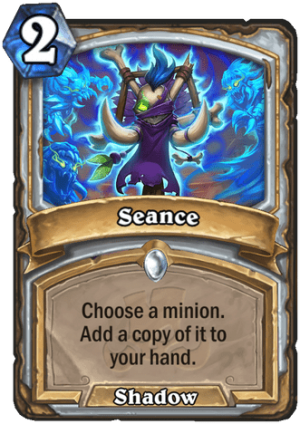
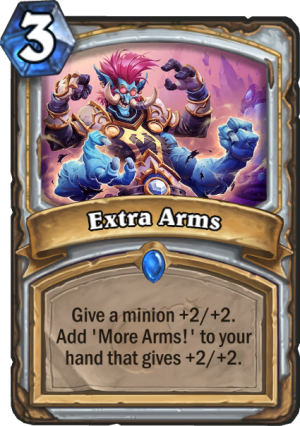
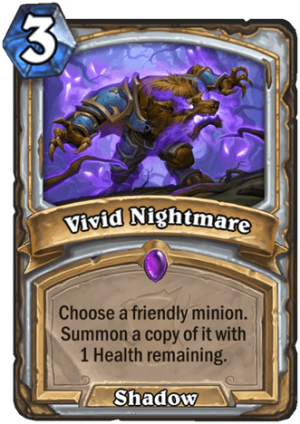
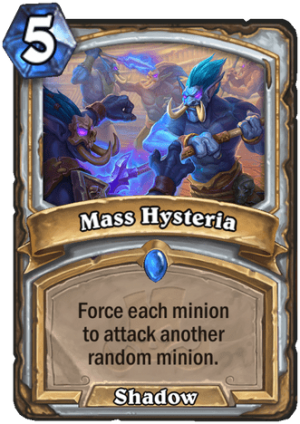
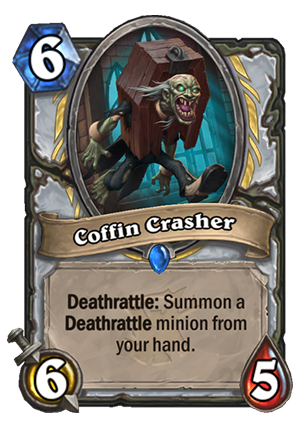
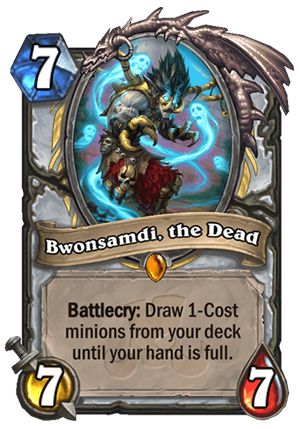
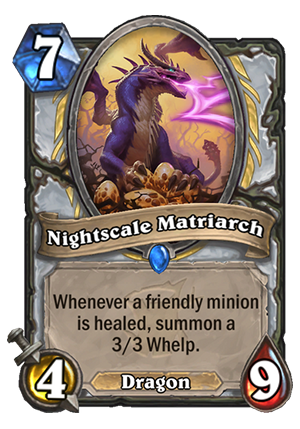

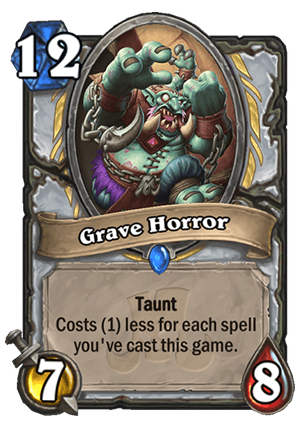


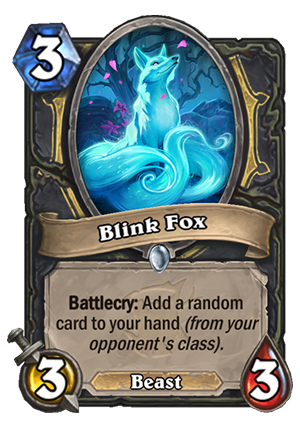
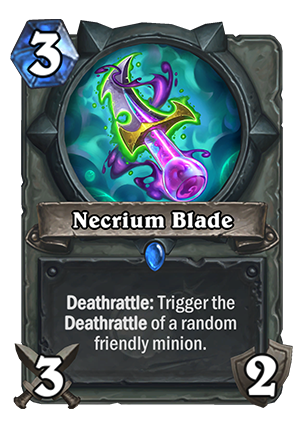


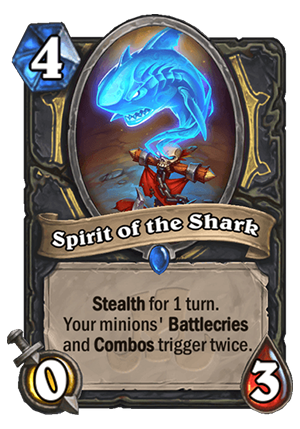
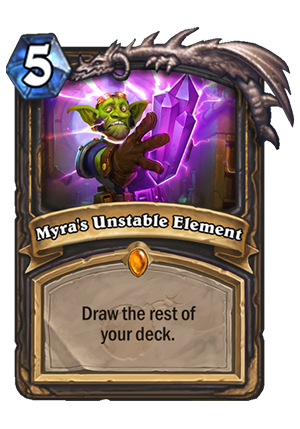

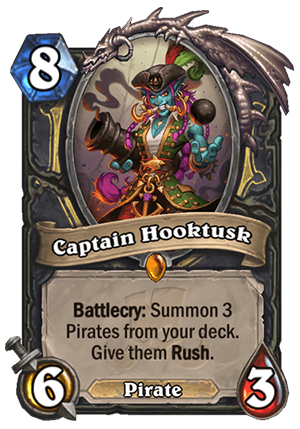
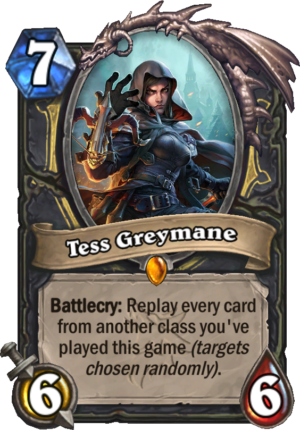

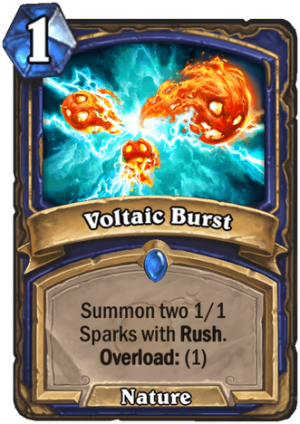
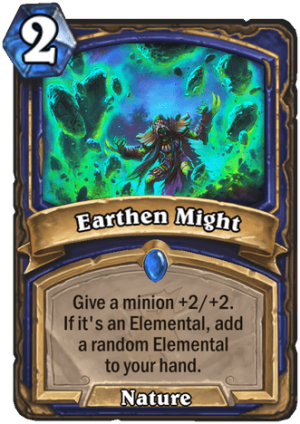
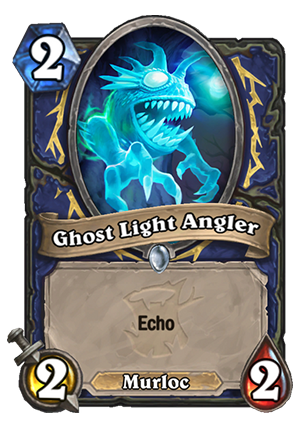

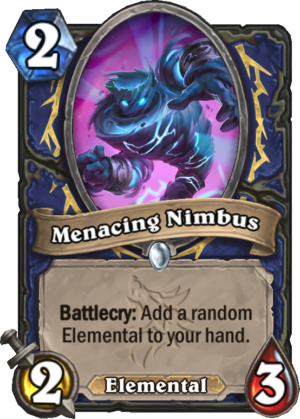

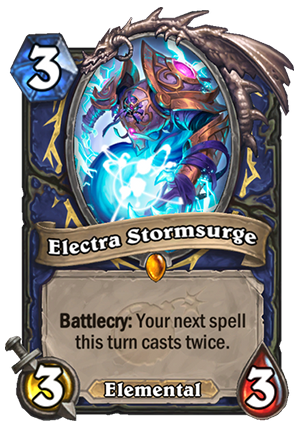

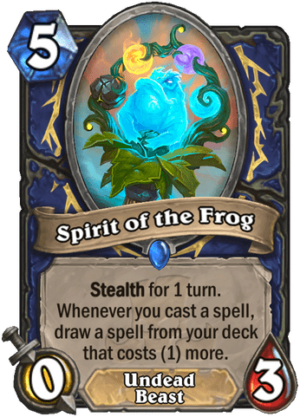
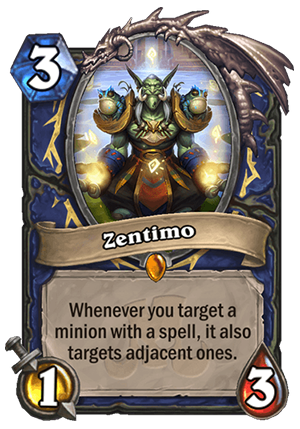
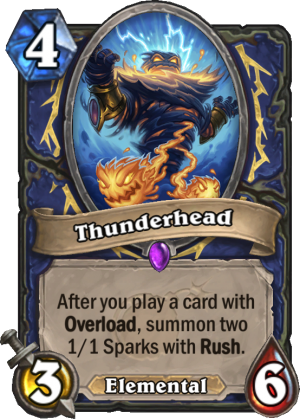
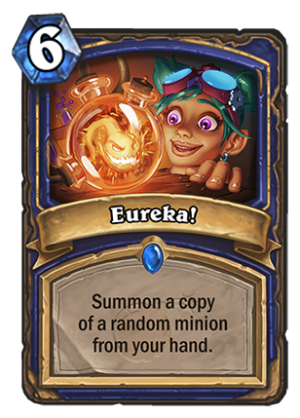
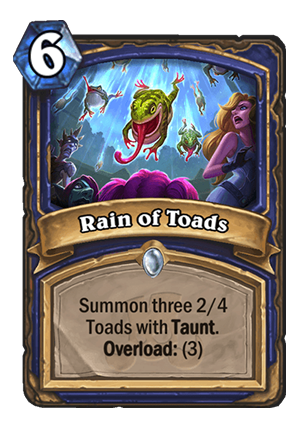

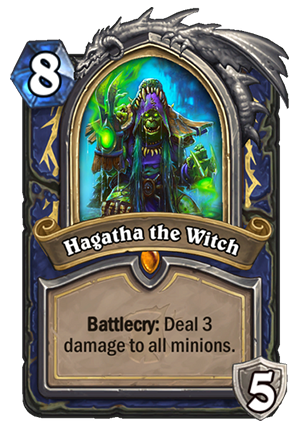



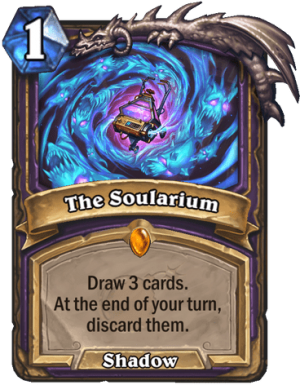

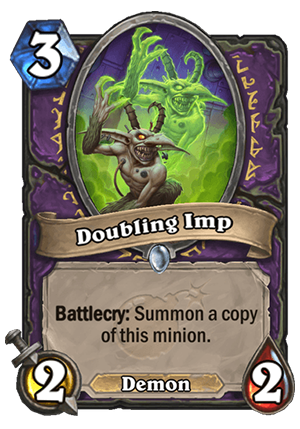


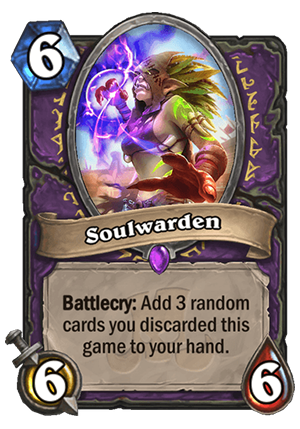


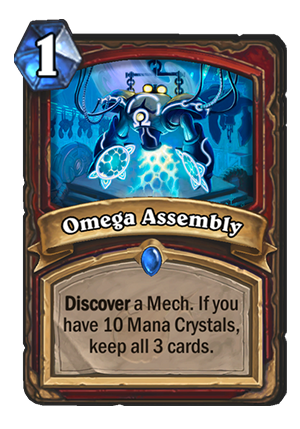


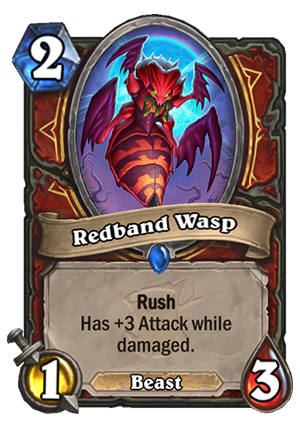
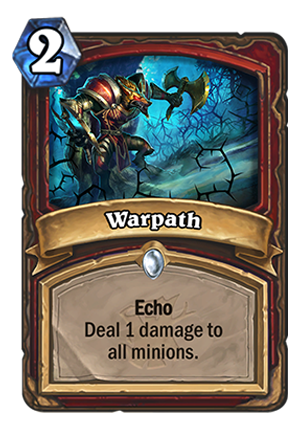

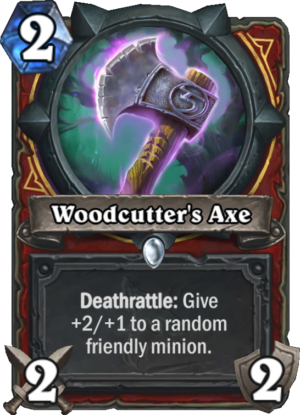
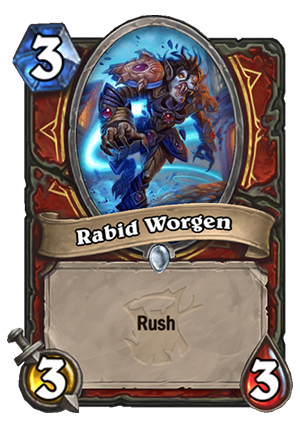
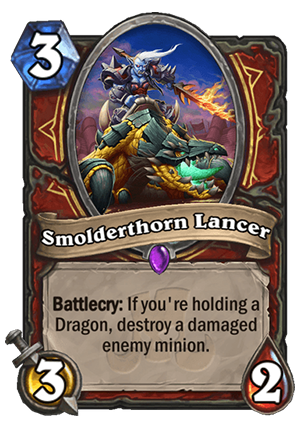

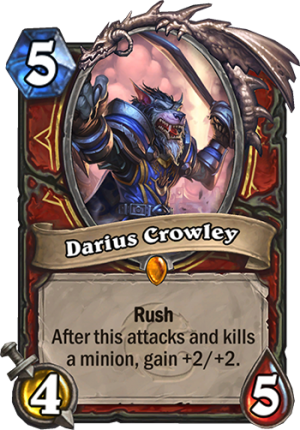



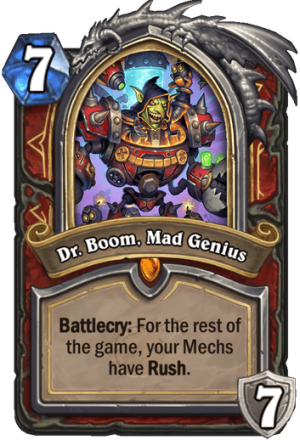

thanks for the article
> you could play a combination of Inner Fire and Whirlwind to clear everything
Inner Fire is a Priest card, isn`t?
I meant Inner Rage, sorry about that 🙂
If for some reason they want the Discard build to be available, they need to change how it’s works first, instead of randomly discarding, just make the player choose which card to discard, and that will enable some strategies played out. But for now, I don’t really know how they intend to make warlock works (aside from self damage, demon synergies, and zoo type.
aside from that, I can’t say I’m happy with Rogue that he doesn’t suffer from the rotation.
Rogue it’s too good it doesn’t suffer from anything aside from bad plays. (And just tell me if they suffer from anything for real)
Card Draws? Check.
Big minion removal? Check.
Combo minion? Check.
Board control? Check.
Stealth/Secret Build? soon, but Check.
Fatigue counter? Check.
Deathrattle Build? Check too.
Ever since vanish was rotated out of standard, Rogue struggles against many large minions since it lacks any good board wipes (aside from Kronx and Zephrys).
This isn’t to say Rogue is in any way not as good as you say (because it is VERY strong right now). Just that it does have at least one thing it lacks
Don’t forget that Galakrond and Togwaggle are here to stay, giving Rogue the most insane tempo swings out of any class. Also, Galakrond’s hero power giving Rogue the “discover a spell” or “discover a dragon” lackeys gives Rogue an edge in the value game.
That being said, Rogue doesn’t have a particularly strong early game (they usually just dagger turn 2, and often Seal Fate the opponent’s face on turn 3) and they also lack tools to heal (especially now that Zilliax is rotating out). If the meta becomes aggressive with the inclusion of Demon Hunter, I think we might see an end to Rogue being tier 1.